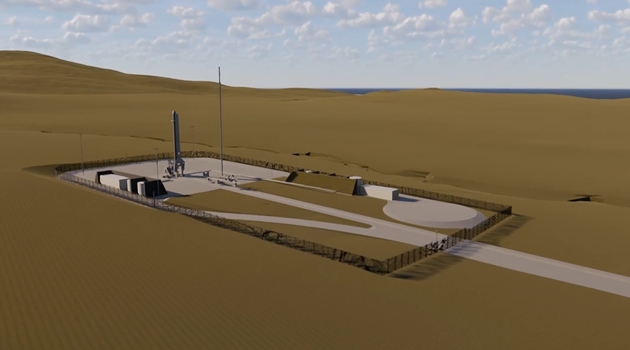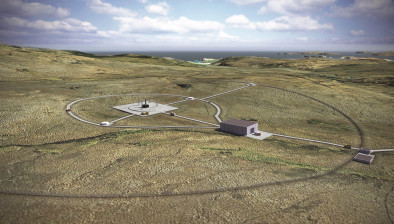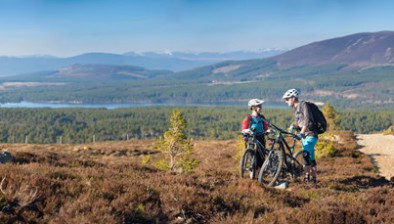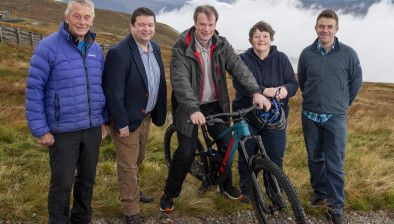Plans lodged for Sutherland satellite launch site
Development agency Highlands & Islands Enterprise (HIE) has submitted a planning application for a satellite launch site on the north coast of Sutherland.
About this development:
- Authority:Highland
- Type:Commercial
- Applications:
- Team:Gardiner & Theobald (construction consultant), NORR (architect)

Artist's impression of the proposed Space Hub Sutherland. Credit NORR Architects
Situated on the A’ Mhoine peninsula, Melness, near Tongue, Space Hub Sutherland would be the first vertical launch site in Europe.
If approved, work could begin later this year with launches starting as early as 2022.
In time, up to 12 launches a year could be made from Sutherland, carrying small, commercial satellites that will typically be used for Earth observation.
An economic impact assessment submitted with the planning application estimates that developing the space hub would create around 61 high quality jobs in Caithness and Sutherland, an area where the population is falling and unemployment levels are above average.
Forty-four of these jobs would be in Melness and Tongue. Skills required on-site will include mechanical and electrical engineering, weather monitoring, control room operations, ground services, security, management and marketing.
A total of around 250 well-paid jobs are expected to be generated across the region and at national level, including through manufacturing and supply chain opportunities.
HIE has approved up to £17.3m to design and build the space hub, made up of funding from HIE itself (£9.8m), the Nuclear Decommissioning Authority (£5m), and the UKSA (£2.5m).
Designed by NORR Architects, the facility would comprise a launch control centre, a single launch pad and associated infrastructure, including roadways, fuel storage, office premises, and antennas. A temporary lightning tower would also be installed at the launch pad around flight days.
The planning application includes measures to address and minimise impacts on the land and marine environments. HIE aims to make the project carbon neutral and has spent two years gathering data and assessing potential effects on wildlife and the local habitat which is characterised by large areas of peatland. Levels of light and noise that could be generated, especially around launch times, are also examined.
David Oxley, director of business growth with HIE, believes that establishing vertical launch capability will mark a major advance for Scotland’s growing space sector.
“This is a truly unique and innovative venture that aims to create the first launch site of its kind in Europe,” said Mr Oxley.
“Space presents a huge economic opportunity for Scotland, and the Highlands and Islands is well placed to benefit substantially.
“Even before the space hub is built, we’ve already received a huge vote of confidence from launch company Orbex, who established a manufacturing facility in Forres just over a year ago.
“That’s an indication of the wider economic benefits that will be generated by establishing a launch facility, and there is great potential for more to follow in other parts of our region.
“We’re very mindful of the need to respect the natural environment and have been diligent in designing measures that will minimise the environmental impact of construction and operations.
“We’ve also held numerous public events and the current shape of the project has been informed by the views of local people and statutory consultees.
“Now that the application is in, we very much hope that people will take the time to study our plans carefully and look forward to the council making a decision in due course.”
Emma Floyd, commercial spaceflight director with the UK Space Agency, said: “Satellite launch from the UK is due to take another giant leap forward with the progress at Sutherland and other sites across the UK.
“We’re committed to backing our growing space sector, which generates an income of £14.8 billion and creates thousands of high skilled jobs.”





















